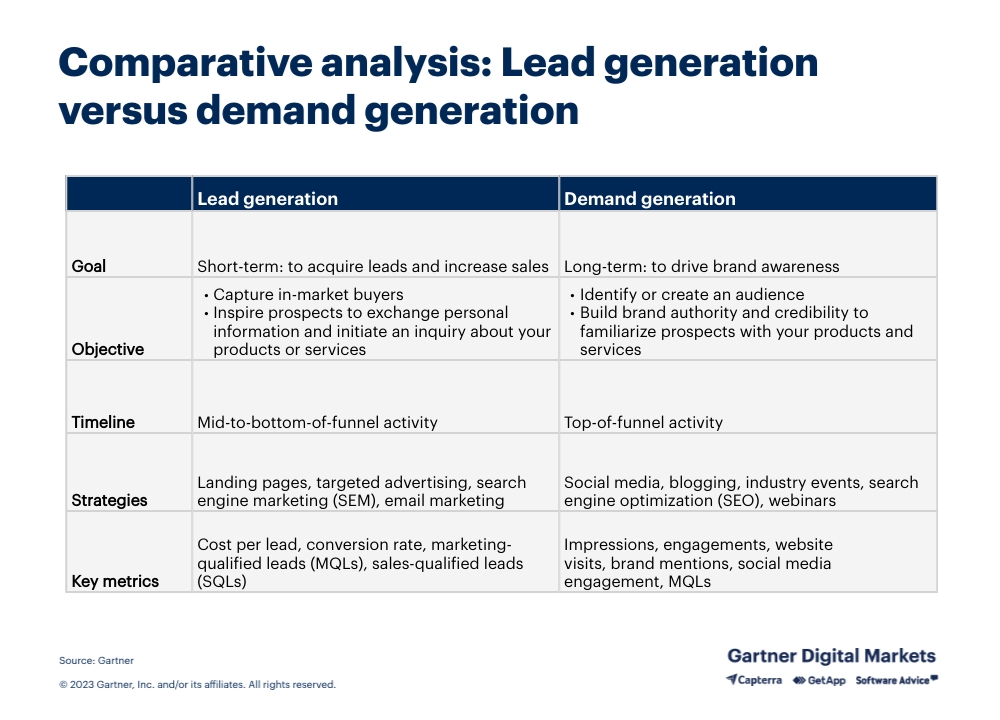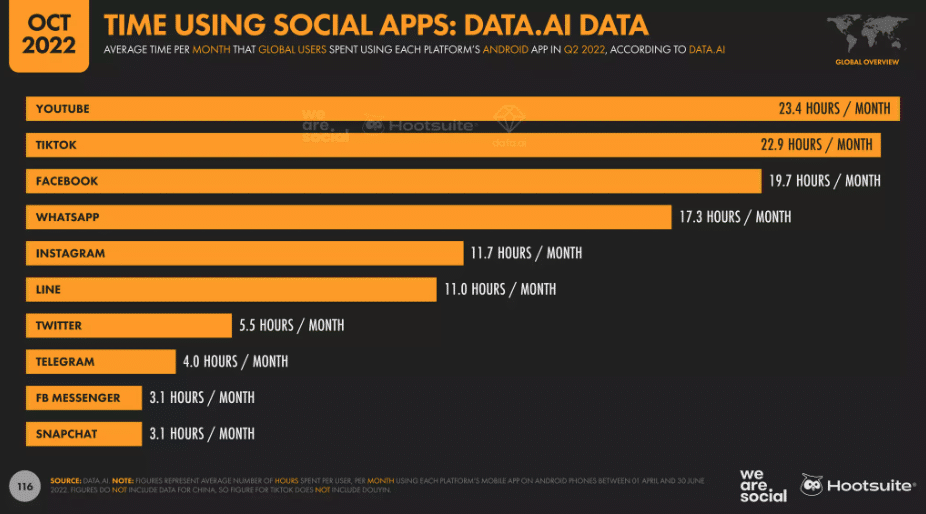In the fast-moving landscape of B2B marketing, demand generation isn’t just a buzzword; it’s the backbone of success. You may have the best product or service in the marketplace, but growth will be challenging if your target audience doesn’t know about you.
This gap is where the power of demand generation comes into play; the art and science of creating awareness, interest, and desire among your potential customers. This blog post will review three tried and true strategies to improve your demand generation.
As a backdrop, let’s review the difference between lead and demand generation. They sound similar, but they are very different.
Remember, demand generation is for the top of your funnel, where people notice and interact with your content. Click To TweetRemember, demand generation is for the top of your funnel, where people notice and interact with your content. This chart from Gartner will help you clarify and create content for your demand gen phase.

The information in the chart speaks to implementation. Let’s look at the strategies to boost your demand gen efforts.
Clarify Your Unique Selling Point (USP)
Before diving headfirst into demand generation, it’s crucial to answer one fundamental question: What sets your business apart? Your Unique Selling Point (USP) is your competitive edge, differentiating you from the competition. It should be something that you could sum up in a short statement.
Your USP isn’t always the same as a company slogan or tagline, although it could be. For example:
“Fast, efficient deliveries” is not unique to one company. That is a tagline.
“Overnight or it’s free” – that’s a USP.
To pinpoint your USP, look for a corner of the market where you can establish dominance. Take a fresh look at your industry to uncover gaps, unmet audience needs, or underserved niches.
Study what your competitors offer, not to copy them but to identify the untapped potential your business can uniquely fulfill. The book Blue Ocean Strategy is one resource to help you think outside the box and craft a strong USP.
The authors include many examples of how some companies have created new markets with few or no competitors. One technique is to reconstruct an existing market’s boundaries.
With an emphasis on carving out unique market space, Blue Ocean Strategy is a toolkit for taking advantage of untapped market space in almost any industry, including tech, healthcare, and manufacturing.
Create a Targeted Social Media Plan
Social media can be a potent tool for B2B demand generation. However, social media creation and distribution are resource-intensive and time-consuming. It’s essential to have a content strategy in place before you begin ramping up your socials.
Tailor your tactics to match your goals. An organic growth strategy is the long game of consistently posting free content and sharing or commenting on others’ posts. Paid strategies are usually part of a strategic funnel, with content focused around a specific outcome, like driving traffic to a landing page or freebie.
Once you have your content strategy in place, here are some tips.
Tip 1 – Repurpose Your Blog.
To increase efficiency, use your blog as the foundation of your content. Doing this makes it easy to repurpose snippets from blog posts for social.
Tip 2: Create a Social Metrics Dashboard
Be sure you have a dashboard for capturing metrics on your posts to help you avoid the trap of posting just to put some content out there, aka “spray and pray.”
Tip 3: Be Choosy About Platforms.
Remember, you don’t have to be on every social platform.
To decide where to post, check out where your prospects are spending time on social. For most B2B companies, LinkedIn is the obvious choice. X (as in ex-Twitter) is also a popular B2B and B2C channel. X has an informal chat format with more flexibility than Linkedin for interacting with people.
Tip 4: Consider TikTok
Finally, don’t discount TikTok as a source of leads. Successful B2B marketer Jade Tambini says most of her leads come from TikTok.

TikTok is the current growth metrics winner for both B2B and B2C. In 2022, people averaged more time spent per month on TikTok than every other platform except YouTube.
Tip 5: Link to Your Website Early and Often.
While not every social post has to include a link back to your site, the overall goal of social media should be to drive traffic to your website. That’s because when prospects visit the website, you can track their progress through the conversion funnel.
Incorporate Data into Decision-Making
The best part of marketing today is the data it provides versus the pre-internet era. Data is the compass that helps cut through insider bias and assumptions that may or may not be on track.
An important step to remember is to ensure you have a good sample size before drawing significant conclusions. Small sample sizes can lead to skewed insights and misguided decisions.
Also, remember that not all metrics are critical. Ensure your dashboard tracks the correct numbers, not just vanity metrics. If you need clarification about what to track and why, Funnel Envy can help.
Moving Ahead
Demand generation is like the broader net for your lead generation that can also be an accelerator for your lead gen efforts. Improving demand gen can create a ripple effect that enhances results through the rest of your funnel and organization. The flip side is also true. A weak demand generation strategy wastes resources and undermines sales from the top to the bottom of the funnel.
Interested in learning more about leveraging demand gen and getting expert help optimizing your results? Our team at FunnelEnvy is ready to help. We’ve got many years of combined experience with funnel optimization, CRO, and other vital elements of demand gen across several industries, from tech to healthcare to manufacturing.
To learn more about working with us and see if we’re a good fit, fill out this short quiz.






